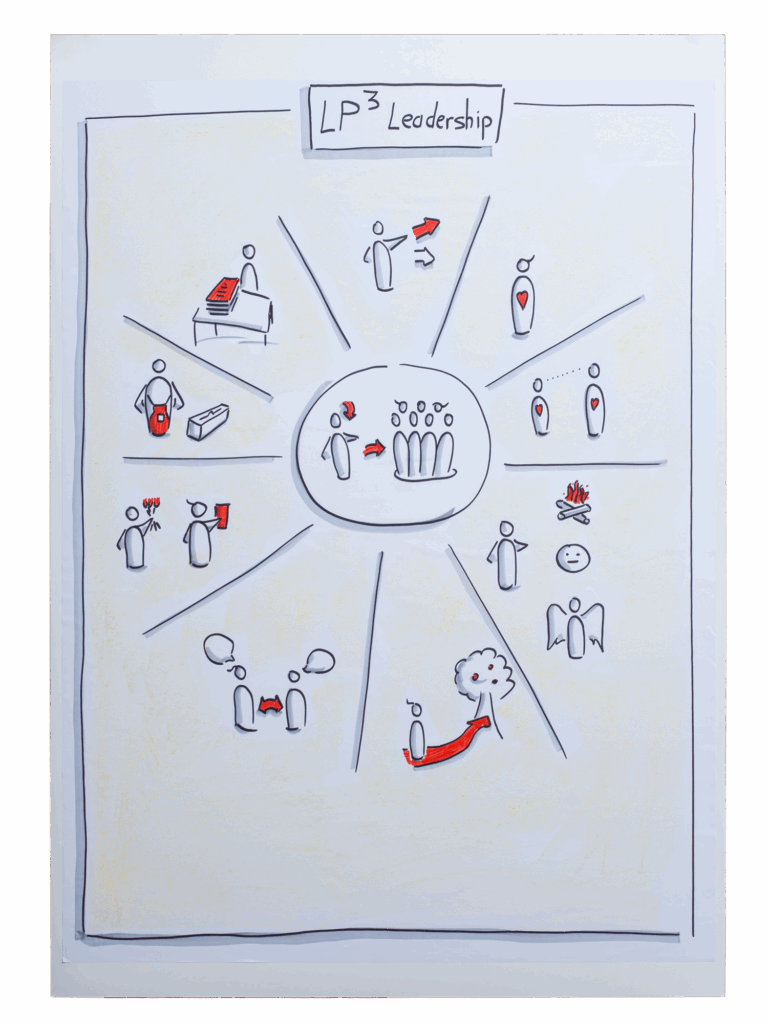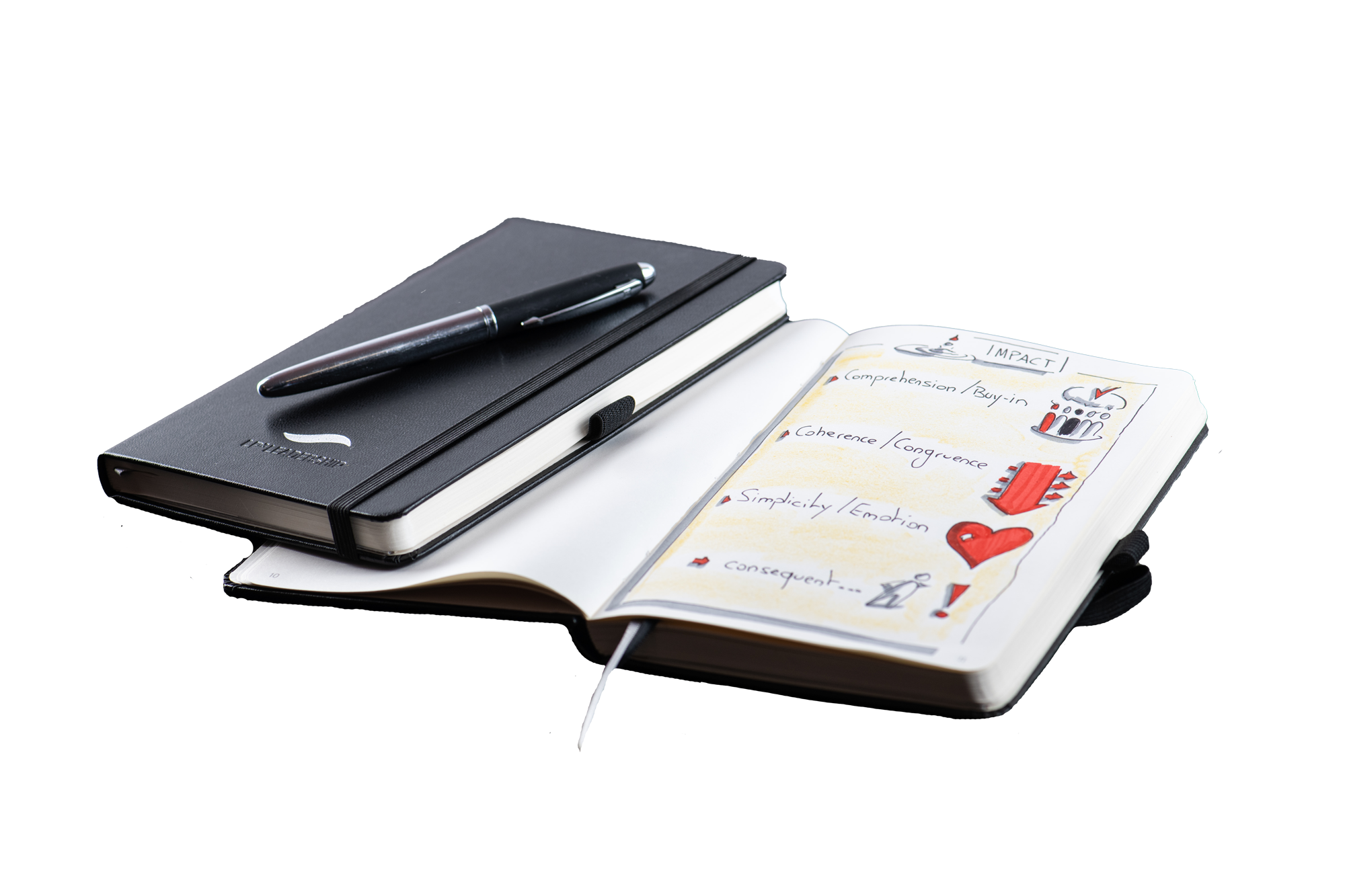In a constantly changing world dominated by artificial intelligence, digitalization, and an ever-increasing pace, we are witnessing a loss of bearings, values, and sometimes common sense. Technological acceleration certainly has its virtues, but it also leads to cognitive dispersion, sensory confusion, and emotional coldness. Faced with this reality, there is an urgent need to restore certain fundamental balances: between acceleration and deceleration, between ease and reflection, between automation and mastery. What if the key to this reconciliation lay in a return to our roots, to simple, human, and sensible practices?
Visual animation—in the artisanal sense of the term—responds precisely to this need. Drawing, writing, coloring, and structuring information on a flip chart or tablet with a stylus engages both hemispheres of the brain, calls on our hands and our intelligence, and slows us down so we can better anchor what we’re doing. It is a form of mental hygiene, an art of living and of passing on knowledge.
Why it is essential to relearn how to write by hand
Neuroscience is clear: handwriting, particularly the repetition of letters at school, plays an active role in children’s motor and cognitive development. It is no coincidence that countries such as Finland, despite being technologically advanced, are placing renewed emphasis on cursive writing. By repeating simple but demanding gestures, we anchor knowledge and form deep neural connections.
Today, we are inundated with endless PowerPoint presentations. Slides upon slides, numbers upon numbers, transition effects galore… Meaning is diluted, attention wanes. As a leader (CEO), speaker, trainer, and catalyst, I chose a different path more than 20 years ago: that of flipchart drawing (posters drawn in advance or live). Whether for leadership training for small, medium, or large companies, in front of the Swiss Post Board of Directors, or during my lectures at universities such as the EMBA Digital Leadership program at HWZ (Zurich University of Applied Sciences), the feedback is unanimous: “It’s refreshing, simple, impactful, beautiful, and relevant.” “It gets to the heart of the matter.” “It makes you want to share.”
My 10 golden rules of visual facilitation
- Adjust the height of the flip chart for visual comfort.
- Prefer white paper or turn printed sheets over.
- Use refillable markers: small black, small red, large gray.
- Draw all the baselines with the small black marker.
- For boxes: write the text first, then draw the box with four unconnected lines.
- Each page has a title accompanied by a symbol drawn in the top left corner.
- Each page is framed by a thin border.
- Work on shadows to give depth:
- 2D objects: external shadow, offset, touching the contours.
- 3D objects: internal shadow, touching the contours.
- Transparent objects: internal reflection.
- Use a single complementary color (e.g., red for my company LP3 Ltd) with a black base.
- Highlight key elements with a pastel background (matched to your complementary color) using beeswax.


Left: image drawn on a flip chart (LP3 Leader model) and, right: image drawn on an iPad Pro (VUCA world (volatile, uncertain, complex, and ambiguous)
Why does this method work so well?
Because images transcend words. They are universal, memorable, and emotive. If a visual is considered beautiful, it becomes something that people enjoy looking at again, sharing, and passing on. The care taken in its creation is a sign of respect for the audience. It is also a way of intentionally slowing down, centering oneself, and reducing stress levels. When I draw, I reduce the noise of the world to get to the essence of my message.
So, I organize blank notebooks for my clients, participants, and/or students, provide them with drawing materials, and “force” them to draw. I give them time (about 10 minutes) to redraw the flip chart in their notebooks, on the right-hand page. The left-hand page is left blank so that they can later add to it and/or transfer it to their professional or private context. If they do the drawing themselves, it has an even greater impact. This is especially true as they will have experienced a moment of calm and slowing down, during which they have used various sensory channels, allowing them to access the message in a different way.
Unlike PowerPoint, which encourages filling in, visual animation requires clarity. On an A1 sheet, there is no room for the unnecessary. This forces you to ask the right questions: What is my message? What is the most meaningful metaphor? What visual structure will anchor the idea? This discipline forces simplicity, mastery, and presence.
And, best of all, thanks to the Office Lens app, your flipcharts can be digitized and integrated into your collaborative tools: OneNote, Word, PowerPoint, PDF, or image. The bridge between tradition and modernity is complete.
Conclusion: drawing to reconcile meaning and form
Visual animation is not an art reserved for artists. It is an essential skill for any leader, educator, or communicator who wants to make a lasting impression. In a world saturated with information, returning to the beauty of the line, to creative slowness, and to visual transmission is a step toward greater humanity. It is also a way to cultivate our attention, our thinking, and our impact.
What if, tomorrow, we all picked up a marker, a blank sheet of paper, and took the time to draw?

